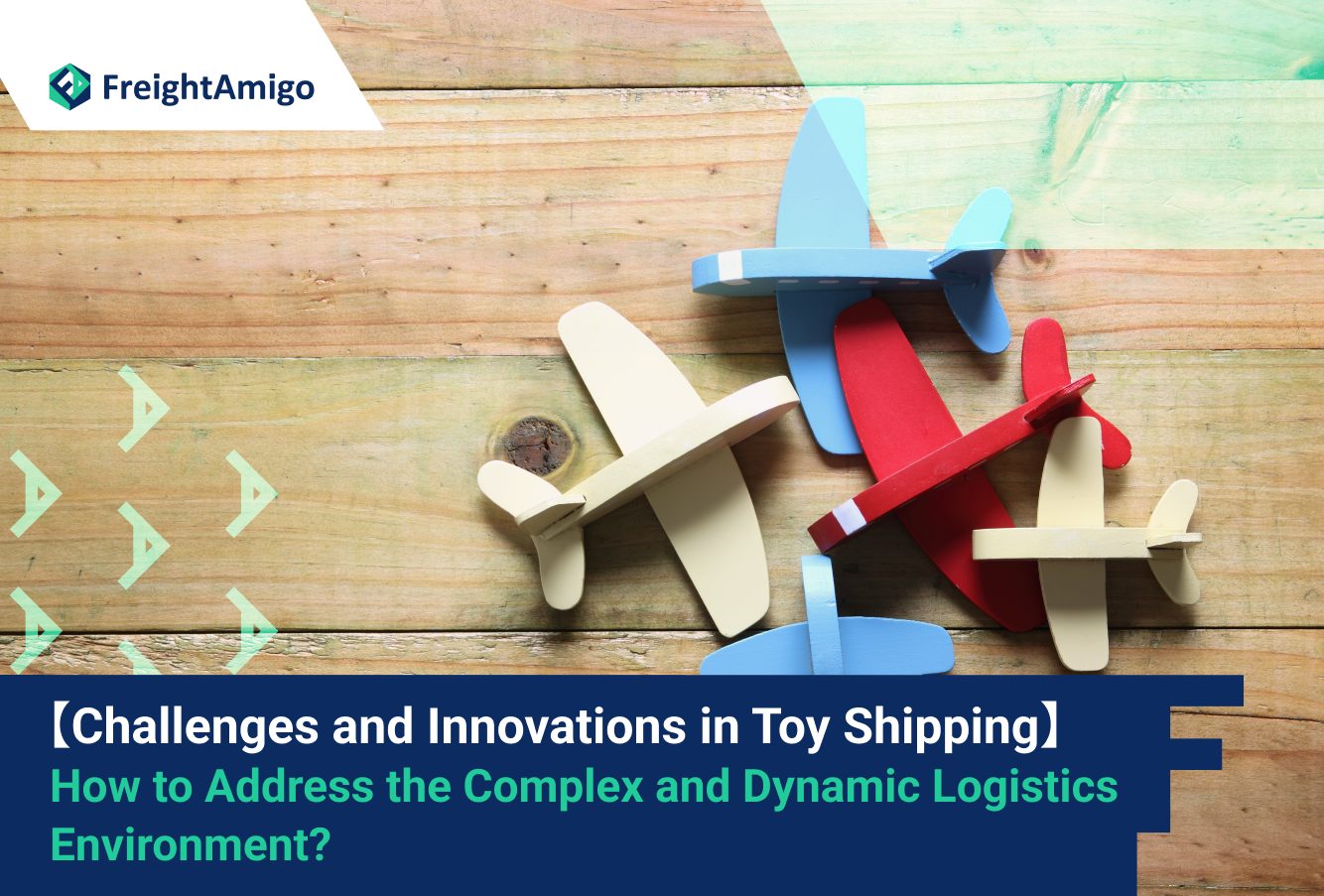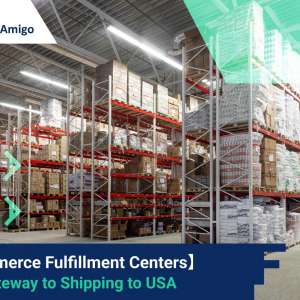Author Name: Tiffany Lee – Marketing Analyst at FreightAmigo
The global toy industry has faced unprecedented challenges in recent times, particularly in the realm of shipping. Companies that manufacture and distribute toys have encountered significant hurdles that have disrupted supply chains and delayed the delivery of products to customers. However, in the face of these challenges, innovative solutions have emerged to mitigate the impact and improve the overall shipping experience. In this article, we will explore the key challenges faced by toy manufacturers and suppliers in shipping their products, as well as the innovative strategies and technologies that are revolutionizing the toy shipping industry.
Want To Compare The Best Express, Air Freight, Sea Freight, Rail Freight & Trucking Rates So As To Have Better Control On Cost?
Understanding the Complexities of Toy Shipping
Shipping toys involves a multitude of variables that can complicate the process. From regulatory compliance to packaging considerations, there are several factors that toy manufacturers and suppliers must navigate to ensure the safe and timely delivery of their products. Let’s delve into the challenges faced by companies in the toy shipping industry and explore the innovative solutions that have been developed to overcome them.
1. Regulatory Compliance and Documentation
When it comes to shipping toys, regulatory compliance is of utmost importance. Different countries have specific regulations and standards that must be adhered to in order to ensure the safety and quality of toys. For instance, in the United States, toys are subject to the Consumer Product Safety Improvement Act (CPSIA), which sets standards for materials, paint regulations, and safety requirements. In Europe, the European Union Toy Safety Directive establishes rules for toy safety before they can be sold in the EU.
To comply with these regulations, toy manufacturers and suppliers must obtain the necessary certifications and documentation. This includes certificates of compliance, which provide information about the product, testing standards applied, and the testing date. Additionally, proper labeling of toys with essential information, such as the manufacturer’s name and address, product name, model number, and warning statements, is crucial.
Innovative technologies have emerged to streamline the process of regulatory compliance and documentation. Digital platforms and software solutions now enable companies to efficiently manage and organize the necessary paperwork, ensuring that all requirements are met and reducing the risk of delays or penalties.
2. Packaging and Protection
Proper packaging and protection of toys are essential to prevent damage during transit. Toys come in a variety of shapes, sizes, and materials, each requiring specific packaging considerations. Large toys, such as playsets or bicycles, may require thick, sturdy cardboard boxes and individual wrapping with tissue paper or bubble wrap. Smaller toys can be shipped in padded envelopes, but it’s crucial to use packaging materials that protect against water, light, and extreme temperatures.
The use of innovative packaging materials and techniques has revolutionized the toy shipping industry. Advanced cushioning materials, such as biodegradable or recyclable foam inserts, provide optimal protection while reducing environmental impact. Additionally, smart packaging solutions equipped with sensors and tracking devices allow companies to monitor the condition and location of their products in real-time, enhancing security and minimizing the risk of loss or damage.
3. Transportation and Logistics
Transporting toys from manufacturing facilities to distribution centers and ultimately to customers’ doorsteps can be a logistical nightmare. The global shipping industry has experienced significant disruptions, including port congestions, container shortages, and increased freight costs. These challenges have been exacerbated by the ongoing COVID-19 pandemic, which has strained supply chains worldwide.
Innovative solutions have emerged to address these transportation and logistics challenges. Companies are leveraging advanced technologies, such as artificial intelligence (AI) and machine learning, to optimize shipping routes, minimize transit times, and reduce costs. Real-time tracking systems enable companies to monitor the movement of their shipments and proactively address any potential delays or issues.
Moreover, the use of alternative transportation methods, such as air freight or intermodal shipping, provides flexibility and efficiency in delivering toys to customers. By combining different modes of transportation, companies can take advantage of the strengths of each method and ensure timely and cost-effective delivery.
4. Customer Experience and Satisfaction
The ultimate goal of toy shipping is to provide a seamless and satisfactory experience for customers. Timely delivery, accurate tracking, and efficient customer support are crucial elements that contribute to customer satisfaction. However, the challenges faced by the toy shipping industry have the potential to negatively impact the customer experience.
To mitigate these challenges, innovative technologies and strategies have been implemented to enhance the customer experience. Advanced tracking systems allow customers to monitor the progress of their shipments in real-time, providing transparency and peace of mind. Automated customer support systems, such as chatbots or virtual assistants, offer immediate assistance and resolve queries promptly.
Additionally, companies are investing in customer-centric initiatives, such as flexible return policies and personalized packaging, to further improve customer satisfaction. By prioritizing the needs and preferences of their customers, toy manufacturers and suppliers can build strong and loyal relationships while differentiating themselves from competitors.
Conclusion
Toy shipping presents numerous challenges for manufacturers and suppliers, ranging from regulatory compliance to logistics and customer satisfaction. However, the industry has responded with innovative solutions that have revolutionized the way toys are shipped, improving efficiency, and enhancing the overall customer experience. By leveraging advanced technologies, optimizing packaging and protection, streamlining transportation and logistics, and prioritizing customer satisfaction, toy companies can navigate the complexities of shipping and ensure the timely delivery of their products. As the industry continues to evolve, embracing innovation will be crucial in overcoming future challenges and meeting the ever-growing demand for toys worldwide.
There Are Different Options For Cargo Transportation. If You Want To Choose The Most Convenient And Suitable Solution, It Is Best To Have The Full Support Of Logistics Experts! If You Are Planning To Ship Goods Overseas, Please Go To The FreightAmigo Page For Inquiries.
===
Read More:
【Cosmetic Product Recycling】 A Guide to Sustainable Reverse Logistics
【Rise of Green Supply Chain】 Pioneering Sustainable Practices in Logistics
【ESG in Logistics】 How ESG Practices Drive Social Responsibility in Logistics
===
If you have any inquiries on logistics/supply chain, feel free to contact FreightAmigo now:
Chat with us online OR
Phone : +852 28121686
WhatsApp: +852 27467829









































